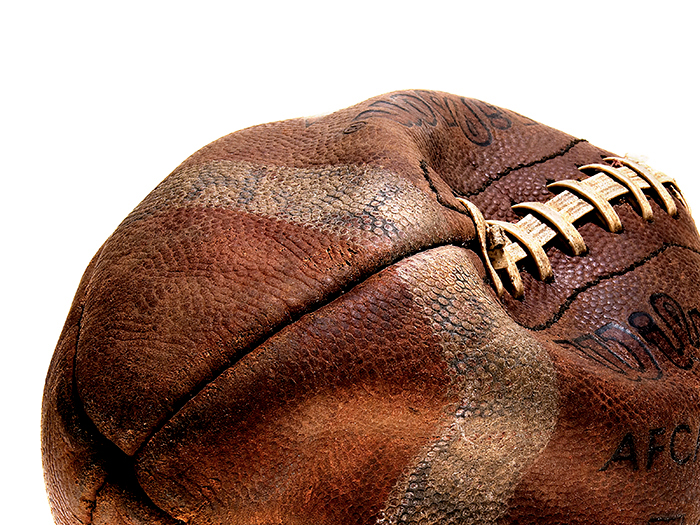Blood Pressure: How Low Is Too Low?
A low reading could simply mean your heart is healthy. Or it could mean that you’re at risk of falling. Here’s how to tell the difference.

A low blood pressure reading is good news, right? After all, the opposite—high blood pressure—can lead to heart attack, stroke, vision loss, and other health problems.
Unfortunately, the answer isn’t so straightforward.
Sure, you might want to post a reading that’s below 120/80 mmHg on your fridge as a boast that your ticker is in good shape. But there is such a thing as a reading that’s too low, says Laxmi Mehta, M.D., director of preventative cardiology and women’s cardiovascular health at Ohio State University Wexner Medical Center.
Abnormally low blood pressure, or hypotension, can be troublesome for some people—especially if it’s causing outward symptoms. “If you’re feeling dizzy, fatigued, short of breath, or you’re passing out, or you have chest pain, that would be concerning,” she says.
Here’s what you need to know about the possible downsides of low blood pressure—and six things you can do if your latest readings have been low.
What Causes Low Blood Pressure?
In general, low blood pressure is defined as 90/60 mmHg or less, according to the National Heart, Lung, and Blood Institute.
A quick refresher on blood pressure readings: The top number (systolic) represents how much pressure your blood is placing on your artery walls when the heart beats. The bottom number (diastolic) represents the pressure on artery walls between beats. The “mmHg” stands for millimeters of mercury—the standard unit of measurement for pressure.
Dehydration can trigger low blood pressure. So can drinking alcohol. It can also be caused by an underlying health issue, like heart failure, nerve damage from diabetes, Parkinson’s disease, low blood sugar, thyroid problems, and blood loss.
Poor nutrition can also spell trouble. Shortchanging yourself on vitamins B12 and folate can slow down the production of red blood cells, which carry oxygen throughout your body. When you don’t have enough red blood cells, this is known as anemia, and it can lead to low blood pressure.
Many medications can also cause low blood pressure. This includes painkillers, diuretics (a.k.a. water pills), erectile dysfunction drugs, antidepressants, and heart medicines. If you have high blood pressure, sometimes the drugs used to treat it can actually cause low blood pressure.
Why? It could be that your doctor overshot the dose, and you’re taking too much medication, Dr. Mehta explains.
Or you might have what’s called “white coat hypertension,” which means your blood pressure is normal at home but spikes when you’re in a doctor’s office.
“If we don’t recognize that, then we’re giving medication to someone who may not need it,” she says.
Another possibility is that you’ve made lifestyle changes—losing weight and exercising, for example—and together with your medication, they’ve brought your numbers down lower than expected.
A sudden drop in blood pressure can also happen when you stand up or after you eat. This happens mostly to people age 65 and older.
What Are the Symptoms of Low Blood Pressure?
Low blood pressure doesn’t always cause problems. If your numbers are usually low but you’re otherwise feeling well, your doctor will probably just keep an eye on things.
But sometimes low blood pressure causes alarming symptoms, including:
- Lightheadedness or dizziness
- Weakness
- Fainting
- Blurry vision
- Nausea or vomiting
- Sleepiness or fatigue
- Confusion or inability to concentrate
Any of these signs warrants a call to your doctor, who will likely take a look at the medicines you’re taking. Sometimes a simple adjustment to the dosing is enough to raise your numbers back to the healthy range. Be sure to let your doctor know about any over-the-counter drugs or supplements you take, since many can interfere with prescription meds.
Your doctor will also want to make sure you’re eating right and getting enough B vitamins. Depending on your symptoms and personal health history, your doctor may also order blood tests and heart screenings to get to the root of the problem.
When Does Low Blood Pressure Become Dangerous?
The big concern with being dizzy, feeling faint, or having blurred vision due to low blood pressure is that you could fall.
Fracture your hip or spine, and you won’t be able to move around easily or enjoy your independence—and that can harm your quality of life. If you experience lightheadedness, dizziness, or any of the symptoms above, sit down right away. Then bring your feet above heart level.
“It’s all about gravity,” Dr. Mehta explains. “When you’re standing, your head is on top, and the blood pools down to the legs. Elevating your legs brings the blood back to your core and brain.”
While you’re resting, ask someone to bring you a glass of water, in case dehydration was the reason your blood pressure dropped.
“After you feel better, contact your physician’s office, and let them know what happened,” Dr. Mehta says.
Important: Sometimes very low blood pressure can lead to shock, which means your body isn’t getting enough oxygen and nutrients to work properly. The symptoms of shock include:
Subscribe to our newsletter
It's quick and easy. You could be one of the 13 million people who are eligible.
Already a member? Click to discover our 15,000+ participating locations.
Follow Us
- Cold and clammy skin
- Rapid and shallow breathing
- Blue skin tone
- Weak and rapid pulse
If you have any of these symptoms, call 911 right away. Shock can be life-threatening.
6 Things You Can Do to Manage Low Blood Pressure
If low blood pressure isn’t causing any symptoms or interfering with your daily routine—and depending on the underlying cause—your doctor may decide to just keep an eye on your readings and ask you to be on alert for any warning signs, Dr. Mehta says.
There are also a few things you can do on your own to prevent problems.
1. Switch to mocktails—or good old H20. Remember, alcohol is dehydrating and can lead to a drop in blood pressure. Water is the preferred thirst quencher, since it helps increase blood volume.
2. Order the spinach salad. Certain foods play a key role in keeping your blood pressure in a healthy range. Vitamins B12 and folate, for example, help your body produce enough red blood cells to prevent anemia.
Leafy greens, avocados, beans, and oranges can help you meet your folate quota, according to the Academy of Nutrition and Dietetics. Chicken, eggs, fish, milk, yogurt, and meat are good sources of vitamin B12.
3. Don’t skip meals. In fact, consider divvying up your meals into four or five small ones spread throughout the day. This can help prevent your blood pressure from dropping sharply after you push away from the table.
4. Uncross your legs. This can be a tough habit to break, but sitting with your legs crossed can hamper your blood flow. It’s also good to start taking your sweet time when changing positions—sitting to standing, lying to sitting, and so on.
5. Start a symptom journal. Having a record of any signs or problems you’ve noticed will help your doctor determine if your low blood pressure is staying the course or heading into a danger zone. If you experience any new symptoms or your current symptoms get worse, let your doctor know as soon as possible.
6. Don’t be afraid to exercise. Staying as active as you can is good for your heart—and your brain, muscles, bones, joints, and mood. Talk to your doctor about how you can exercise safely, and let fitness instructors know of any concerns you have.
Take Your Favorite SilverSneakers Classes Online!
SilverSneakers members can access live fitness classes and wellness workshops through SilverSneakers LIVE. See the latest schedule and RSVP for classes here.
Not a member? If you have a Medicare Plan, it may include SilverSneakers—at no additional cost. Check your eligibility instantly here.




